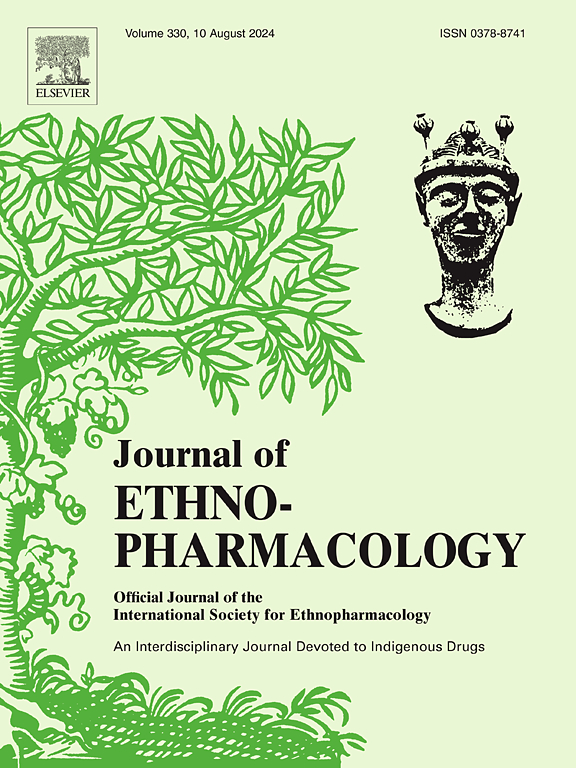Zhizichi decoction alleviates depressive-like behaviors through modulating mitochondria-associated membrane via the IP3R3-GRP75-VDAC1 complex
IF 4.8
2区 医学
Q1 CHEMISTRY, MEDICINAL
引用次数: 0
Abstract
Ethnopharmacological relevance
Zhizichi Decoction (ZZCD), a traditional Chinese medicine (TCM), is derived from the combination of Gardenia jasminoides J. Ellis [Rubiaceae] and Semen Sojae Praeparatum, a fermented derivative of Glycine max (L.) Merr. [Leguminosae]. ZZCD has demonstrated anti-inflammatory properties and the potential to promote neural plasticity. Neuroinflammation is believed to contribute to the development of depressive symptoms.
Aim of the study
This study investigates the potential antidepressant effects of ZZCD, focusing on its role in regulating neuroinflammatory responses and mitochondria-associated membrane (MAM) structure.
Materials and methods
Using high-performance liquid chromatography (HPLC), we identified five active ingredients in ZZCD. We then evaluated its effect in a chronic social defeat stress (CSDS) mouse model. A combination of Network pharmacology analysis, Western-blot, immunostaining, enzyme-linked immunosorbent assay (ELISA), co-immunoprecipitation (CO-IP), mitochondrial transmembrane potential (ΔΨm), and transmission electron microscopy (TEM) was adopted to elucidate the mechanisms by which ZZCD improves MAM structure, inhibits neuroinflammation, and exerts antidepressant effects. Finally, according to the molecular docking results, a GRP75 overexpression viral vector was constructed to manipulate the MAM-related protein GRP75, further validating the mechanism of ZZCD's antidepressant effect.
Results
ZZCD treatment significantly ameliorated depressive-like behaviors induced by CSDS in mice and reversed adverse changes in endoplasmic reticulum (ER) stress, MAM structure, and mitochondria injury. In addition, ZZCD effectively reduced microglial inflammatory activation and suppressed the increased expression of pro-inflammatory cytokines. Finally, the antidepressant effects of ZZCD were primarily mediated through the IP3R3-GRP75-VDAC1 complex, as demonstrated by the overexpression of the GRP75 protein.
Conclusion
In summary, ZZCD exerts antidepressant effects in the CSDS model by improving the MAM structure, alleviating neuroinflammation, and enhancing mitochondrial function.

求助全文
约1分钟内获得全文
求助全文
来源期刊

Journal of ethnopharmacology
医学-全科医学与补充医学
CiteScore
10.30
自引率
5.60%
发文量
967
审稿时长
77 days
期刊介绍:
The Journal of Ethnopharmacology is dedicated to the exchange of information and understandings about people''s use of plants, fungi, animals, microorganisms and minerals and their biological and pharmacological effects based on the principles established through international conventions. Early people confronted with illness and disease, discovered a wealth of useful therapeutic agents in the plant and animal kingdoms. The empirical knowledge of these medicinal substances and their toxic potential was passed on by oral tradition and sometimes recorded in herbals and other texts on materia medica. Many valuable drugs of today (e.g., atropine, ephedrine, tubocurarine, digoxin, reserpine) came into use through the study of indigenous remedies. Chemists continue to use plant-derived drugs (e.g., morphine, taxol, physostigmine, quinidine, emetine) as prototypes in their attempts to develop more effective and less toxic medicinals.
 求助内容:
求助内容: 应助结果提醒方式:
应助结果提醒方式:


